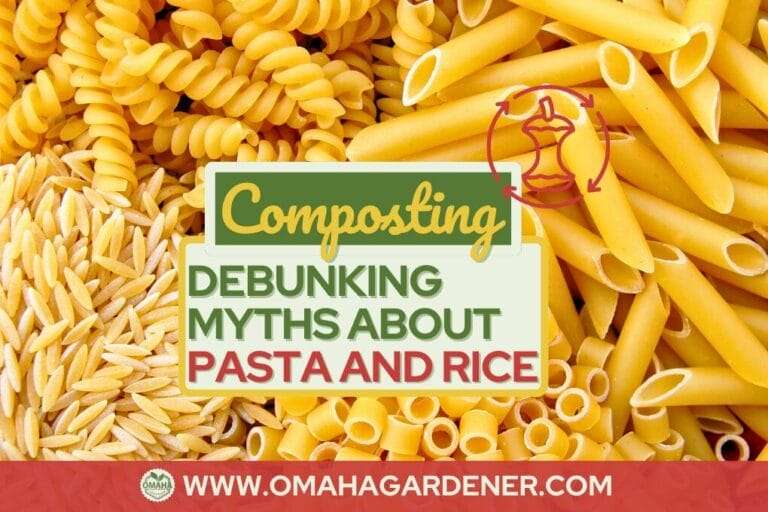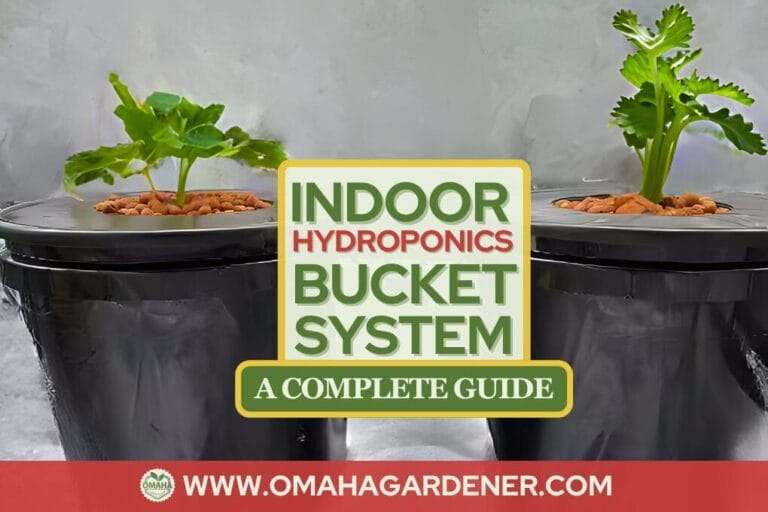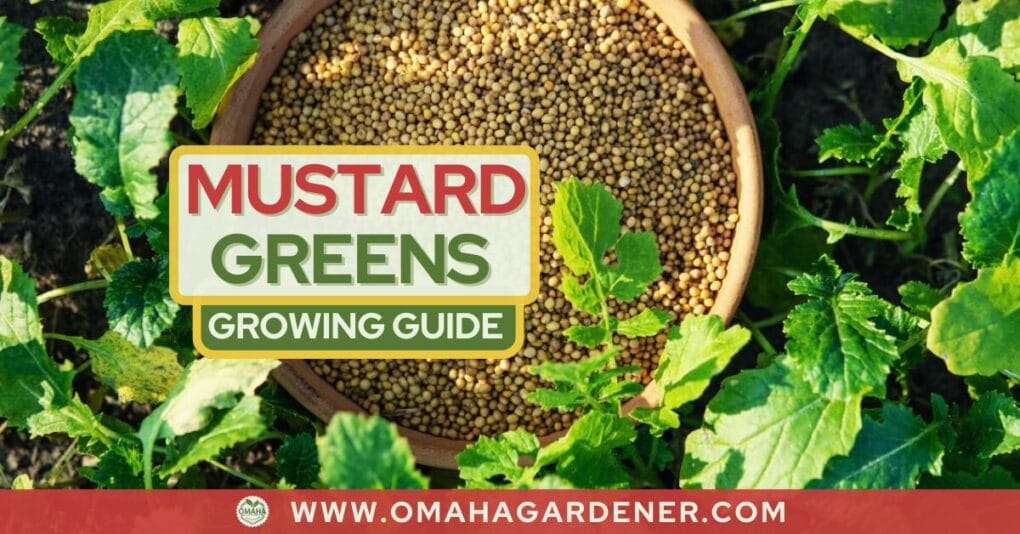
Looking for ways to spice up your usual garden salad? Do you crave that peppery and spicy, yet tangy kick, with a hint of bitterness on every bite? Mustard leaves, also known as mustard greens, are just what you are looking for!
Not only do they boost the flavor of your food, but they also provide you with essential nutrients needed for a healthy body. Mustard leaves are rich in Vitamin K which improves heart health and Vitamin C which boosts our immune system. They are also low in calories and a great source of fiber, minerals, and antioxidants.
If you want to get started with growing this plant in your garden or backyard, worry not because we have got you covered. Muster the courage and have the confidence in growing them by following this Must-Try Guide for Growing Mustard Leaves!
Table of Contents
How to Plant Mustard Greens
Typically, mustard greens are grown from seeds, but you could buy a transplant or a seedling from your local farmer. Either way, we are here to provide you with quick and easy steps for growing your own greens for a successful harvest.
Starting with seeds, sow each seed about a quarter to a half inch (¼ – ½ in) deep and about a half to an inch (½ – 1 in) apart. Make each row nine to 18 inches apart and sow them every three weeks for successive harvests.
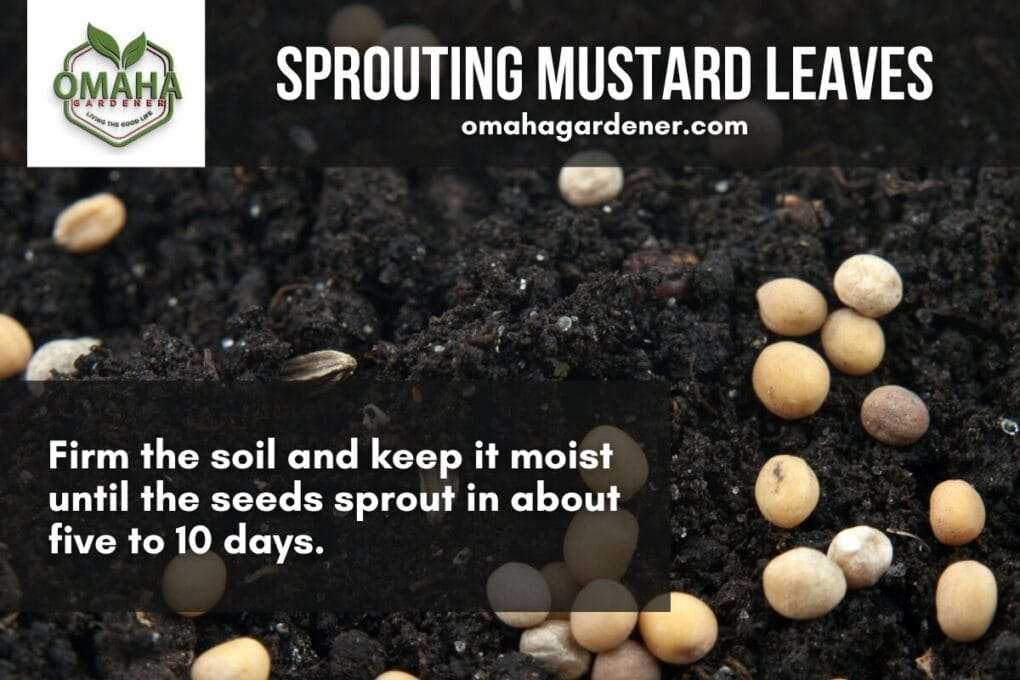
Sprouting Mustard Leaves
Firm the soil and keep it moist until the seeds sprout in about five to 10 days. Thin the seedlings to three inches apart. If you are starting with seedlings, plant them three to five inches apart instead.
Place them in a location where they can have plenty of sunlight or at a place with partial shade.
How to Ensure a Bountiful Mustard Harvest
Knowing how to maintain a plant is just as important as knowing how to take care of it. You can become an expert in mustard greens right away if you understand the various aspects that affect plant growth. If you follow this list, you'll soon be able to call yourself a certified green thumb!
- Soil
A fertile and well-drained soil is perfect for growing mustard leaves. Plant them in loamy soil amended with compost manure and other organic materials to provide them with the nutrients much needed for their growth. You could also prepare a soil media by mixing carbonized rice hull, vermicast, and compost, with a 1:1:1 ratio. The ideal soil pH should be around 6.0 to 6.5.
Also make sure the soil is at the optimum temperature of below 75 °F (24 °C) and above 32 °F (0° C) as mustard seeds germinate best at 55-65°F (13-18 °C). At a lower temperature than 32 °F, seed germination is very slow and at the same time, you could destroy your seedlings. At a temperature higher than 75 °F, your plants will bolt (grow flowers) and become overly spicy and bitter. You wouldn’t want that in your salad, right?
- Seasons
Planting seeds during mid to late spring is a big no-no since mustard greens do not grow well during summer. Temperatures during this season reduce plant growth and quality. So sow your mustard seeds three weeks before the last frost date or from mid to late summer for late fall and winter harvests.
- Water
Again, mustard greens want moist, well-drained soil to thrive. They need one to two inches (five cm) per week, rainwater included. Keep the soil moist but not water-logged or overly moist, and make sure to not water from above to prevent the growth of diseases in your leaves.
- Fertilizer
Your sprouting mustard plants could use some balanced fertilizer through the growing season, especially if you have poor soil. You can add nitrogen-rich fertilizers after transplanting or thinning to promote the plant’s rapid maturation. Organic slow-release fertilizers such as blood meal, alfalfa meal, and worm castings, are also great for mustard.
Protecting Your Mustard Leaves From Pests
Thankfully, mustard leaves are fast-growing and are not as susceptible to problems as other plants, but that does not mean they are immune to damage!
There are different causes that may destroy your hard-earned mustard leaves, with weeds, insects, and diseases being the most common. The truth is that these factors are unavoidable but knowing how to combat them will definitely save your time, money, effort, and most especially your plants.
Here are the different ways you can protect your plants from pests and diseases:
Insects
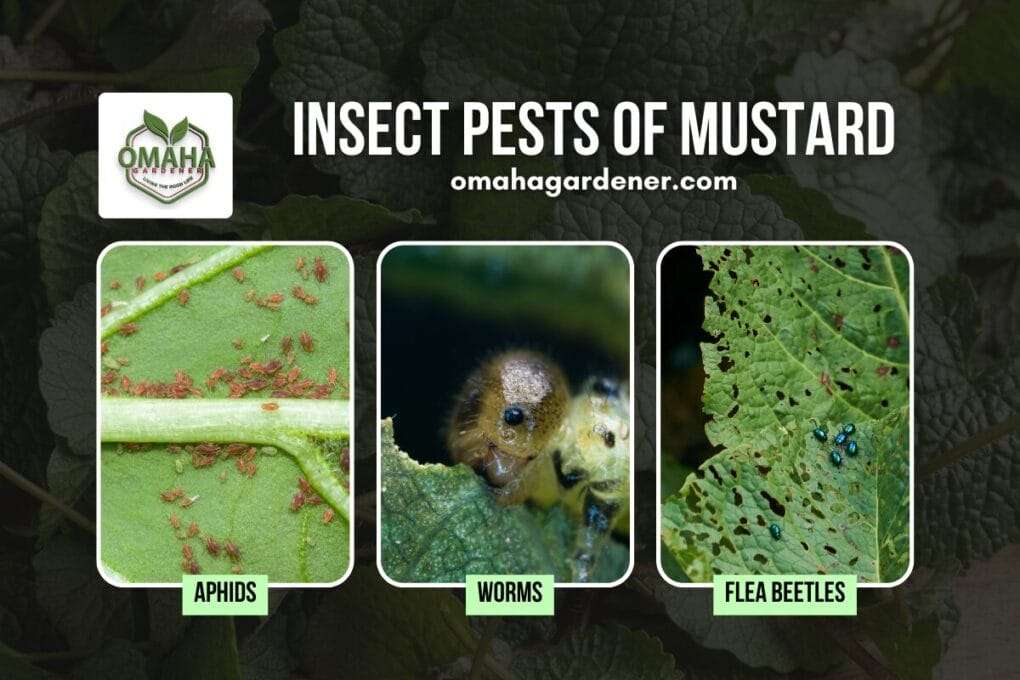
Insect Pests of Mustard Leaves
- Aphids
How to Identify: Look for little green soft-bodied insects that feed on the underside of the leaves. Infected leaves are wrinkled and curled.
How do they thrive: They thrive on new plant growth and buds. Once the host becomes overpopulated or dead, they will move to another plant. Their eggs can even thrive in the harsh winter conditions, so uncontrolled infestation could lead to all your plants dying.
How to control: Use appropriate insecticides or strong water streams to dislodge insects. Early detection could also control potential infestation.
- Cabbage Worms and Loopers
How to Identify: Cabbage worms are velvety green with faint yellow stripes larvae while cabbage loopers are yellow-green caterpillars. Holes on the leaves are often an indication of their presence as they chew on them.
How do they thrive: When uncontrolled, they could eat your leaves out leaving only the vein and the stems. They are frequently immobile so they could destroy your plants completely if you do not remove them.
How to control: Manually remove and squish the eggs then use row covers to prevent adult butterflies from laying eggs. Companion planting, especially with thyme, could repel the worms.
- Flea Beetles
How to Identify: Flea beetles are small (less than 2.5 mm) and elliptical or oval-shaped insects that jump when disturbed. They feed on the surface of leaves and stems, which could cause the eventual withering and death of the plant.
How do they thrive: Adults emerge in mid to late spring and become more active as the days get warmer.
How to control: Control the insects with insecticides at the seeding stage or after seedlings have emerged from the soil. Other insects, like the western damsel bug and the northern field cricket, could also help regulate their populations, as they prey on these beetles.
Diseases
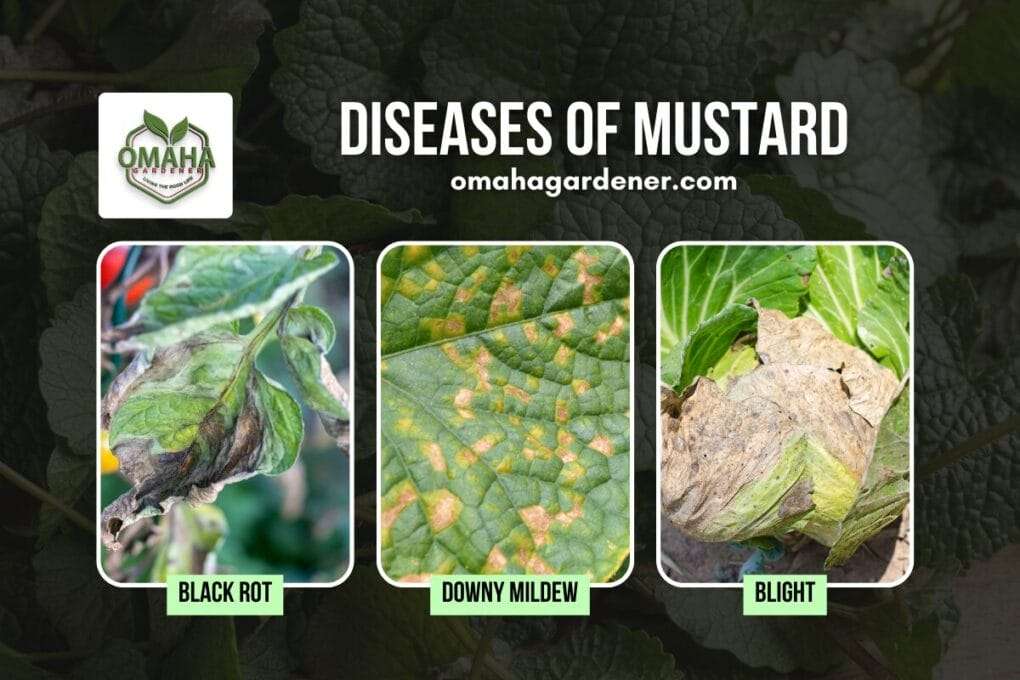
Diseases of Mustard Leaves
- Downy Mildew
How to Identify: Look for floury, circular, dirty white patches on either side of the leaves
How do they thrive: High temperatures, low humidity, and little to no rainfall with wind
How to control: Apply the first spray of fungicide as soon as seedlings appear then repeat thrice a week. Manage the weeds that may carry the fungi-like microorganism that causes downy mildew.
- Black Rot or Bacterial Blight
How to Identify: Look for discolorations in the plant. Infected plants have yellow leaves, veins show brown to black discoloration, and dark-colored streaks can be seen on the stems. Rotting and withering can also be observed.
How do they thrive: Warm and humid temperatures
How to control: Remove infected plant material to stop the spreading of the disease into healthier parts of the plant. Also, be careful when handling the plants to avoid injuries that can encourage infection.
Picking the Right Variety
Adding mustard leaves will definitely level up your food, but picking just the right variety to include can do wonders for your palate.
For a mild tasting subtle hint of spice, you can choose among Florida broadleaf, amara, red tatsoi, and tokyo bekana; use rosette tatsoi for the light tangy flavor. If you want to take the spiciness level go through the roof, you can opt for the spicy red giant or the wasabi-like variants wasabina, mizuna, or osaka purple. If you just want it in the middle while still having that satisfying heat, go for the medium-hot green wave mustard.
FAQs
Can mustard leaves be grown in containers?
Yes, mustard leaves can be successfully grown in containers. Choose a container with good drainage and a depth of at least 6 inches. Fill it with a well-draining potting mix and sow the mustard seeds according to the packet instructions. Place the container in a sunny spot and water regularly to keep the soil moist. Remember to thin out the seedlings as they grow, leaving enough space between plants. With proper care, you can enjoy a fresh harvest of mustard leaves from your container garden.
Are mustard leaves prone to bolting?
Mustard leaves have a tendency to bolt or produce flowers and set seeds when exposed to prolonged heat or when nearing the end of their lifecycle. Bolting causes the leaves to become bitter and less desirable for consumption. To prevent or delay bolting, choose mustard varieties that are known for their bolt resistance and provide them with adequate shade or protection during hot periods. Harvesting the leaves regularly and keeping the plants well-watered can also help to minimize bolting.
Can I grow mustard leaves indoors?
Yes, you can grow mustard leaves indoors as long as they receive sufficient light. Place the potted mustard plants in a bright location, such as a sunny windowsill or under grow lights. Maintain a temperature range of 60°F to 75°F (15°C to 24°C) for optimal growth. Adequate air circulation and proper watering are important to prevent diseases. Harvest the outer leaves when they reach a suitable size, allowing the inner leaves to continue growing. Indoor-grown mustard leaves can provide a fresh and flavorful addition to your meals.
Conclusion
Now that you know the things you need to know about growing mustard leaves, there is only one thing left to do: let’s get started with planting! Whether you start with seeds or seedlings, whatever variety you pick, or however inexperienced you are in gardening, this must-try guide for growing mustard leaves will surely get you by. Share with us your stories and experiences over a bowl of salad with mustard leaves freshly picked from your garden, grown with love and care.

